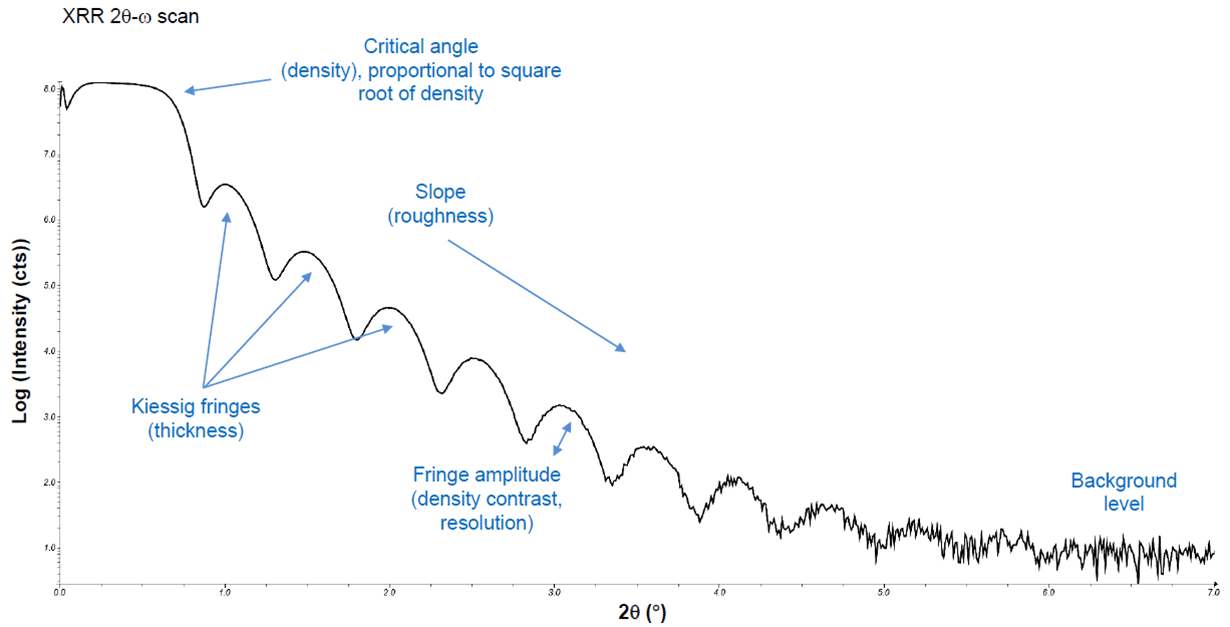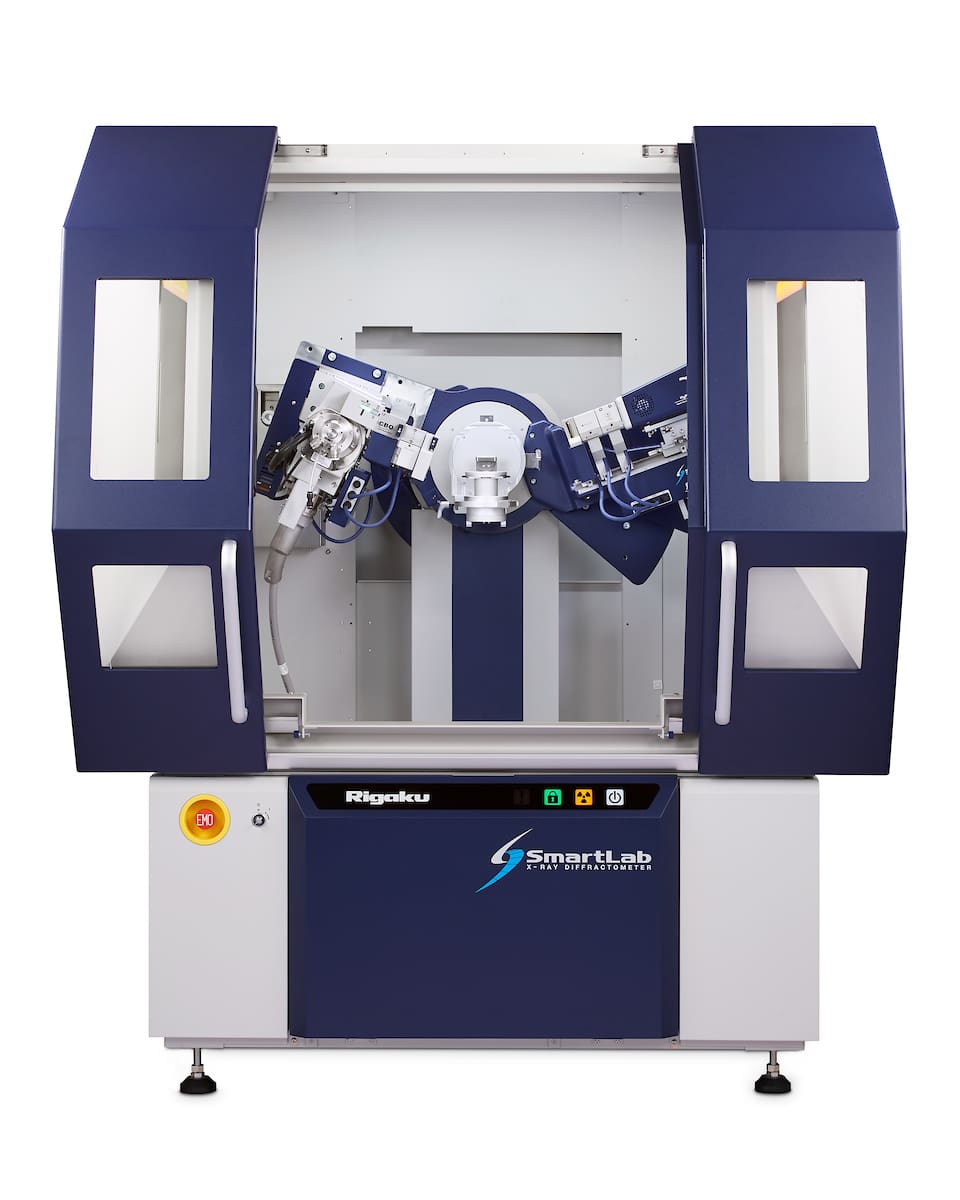X-ray Reflectometry (XRR)

X-ray Reflectometry (XRR) is a non-contact, non-destructive X-ray characterization technique suitable for both amorphous and crystalline materials. It provides refined film thicknesses, densities, and interfacial roughness determinations for film stacks whose approximate chemistries and thicknesses are known.
Strengths
- Highly sensitive to electron density perpendicular to surface: optimized for thin films
- Works well on crystalline, amorphous, or combination film stacks
- Nondestructive analysis
Limitations
- Elemental composition of materials should be determined in advance
- Advanced modeling often required to extract critical insights
- Lateral inhomogeneities cannot be incorporated into XRR models


